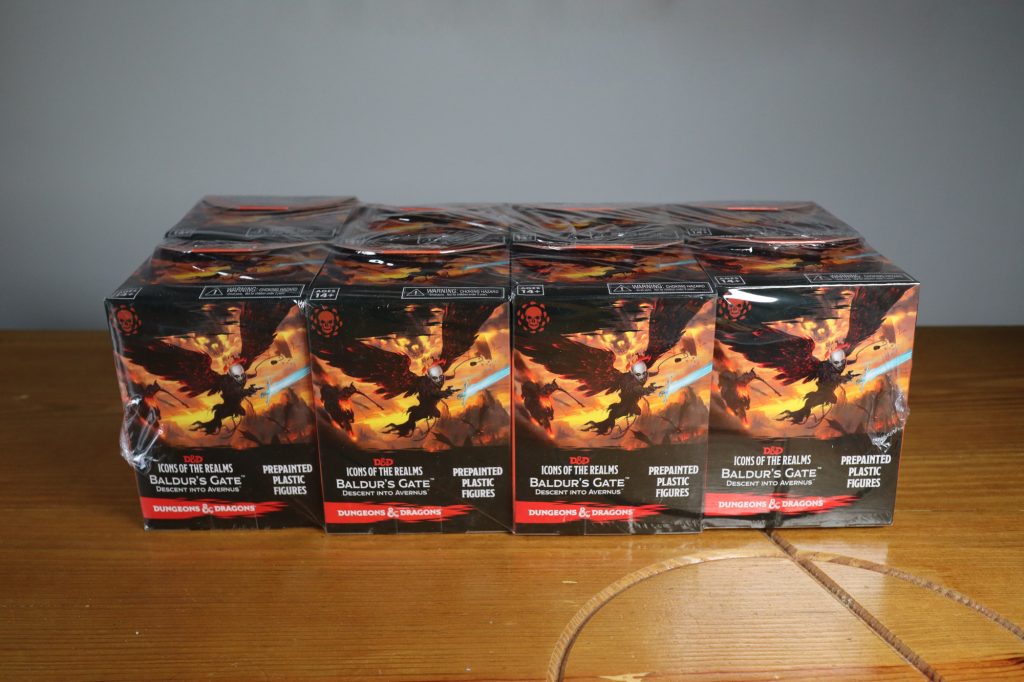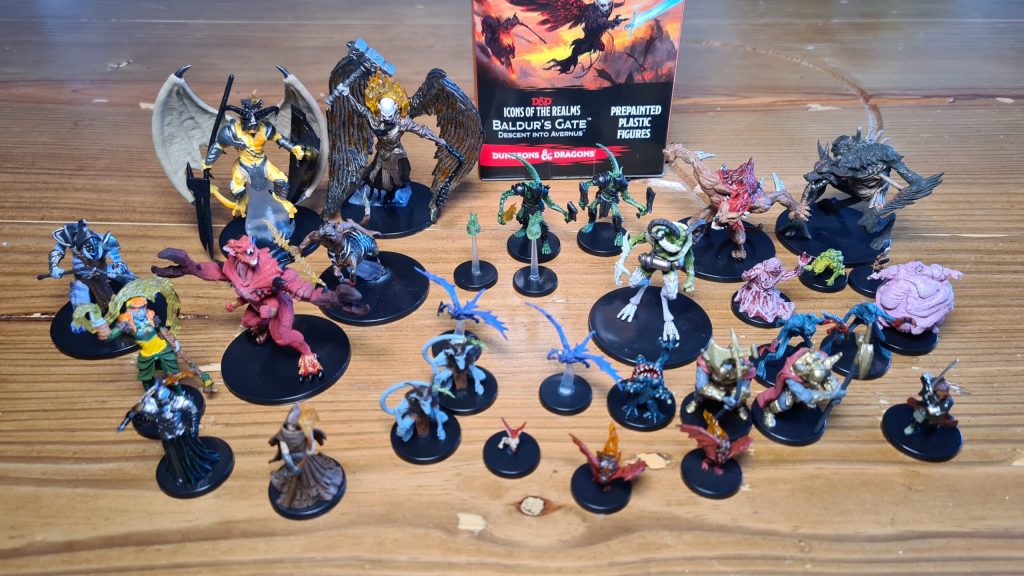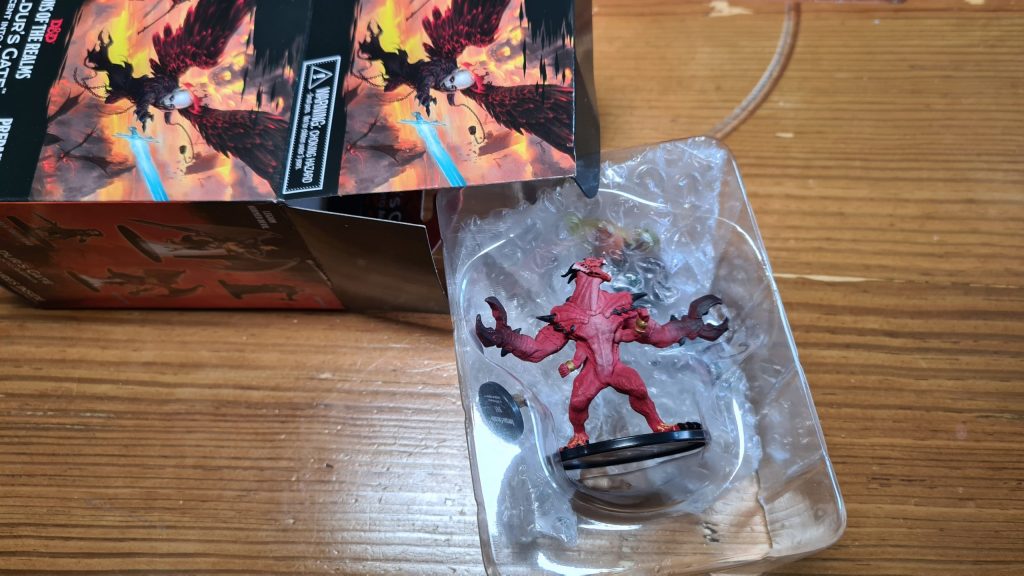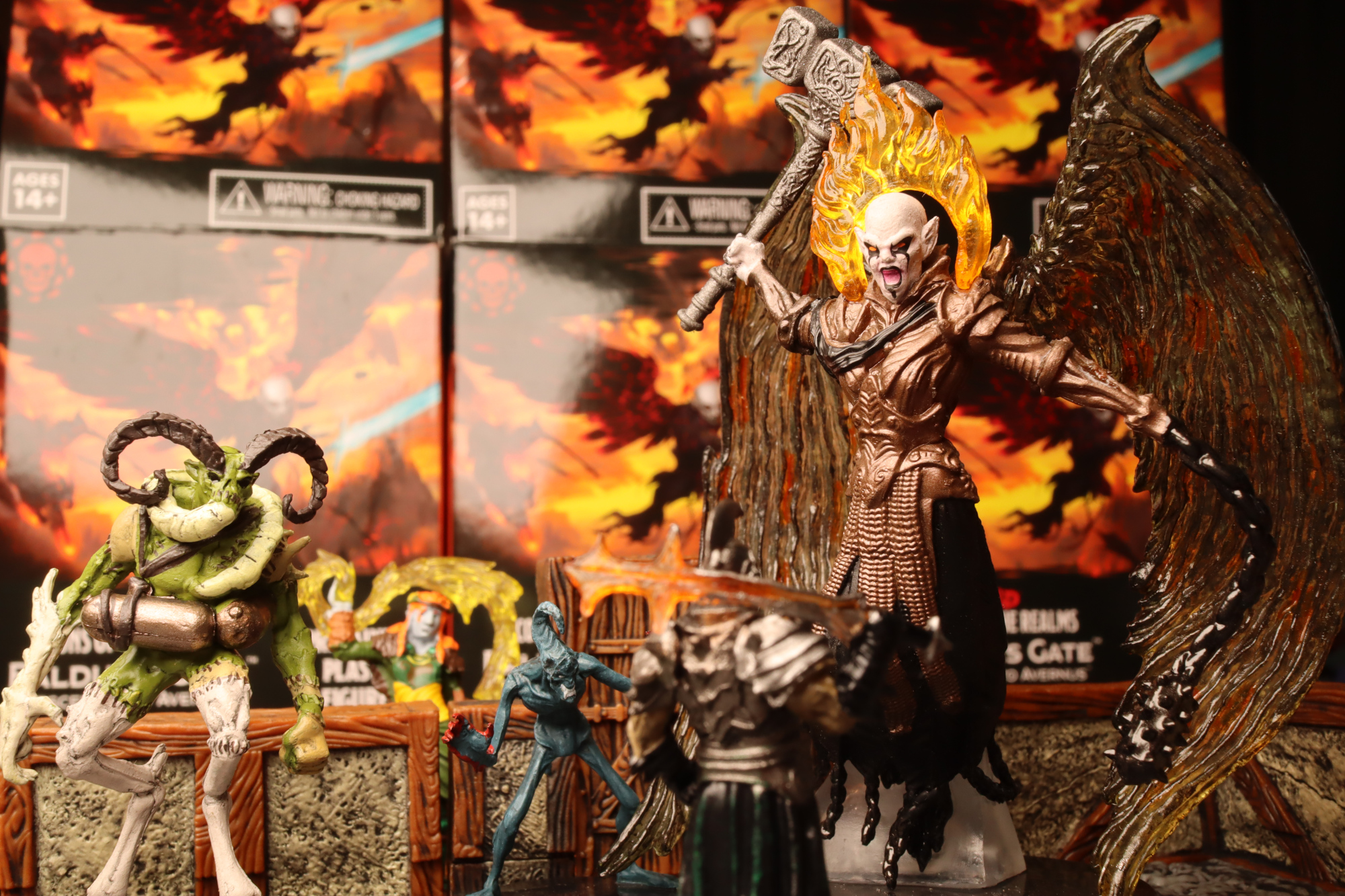WizKids has just re-released the D&D Icons of the Realms: Baldur’s Gate – Descent into Avernus set, the 12th set of pre-painted miniatures. Originally released back in August 2019, like many of the Icons of the Realms sets, it comes in blind booster boxes. With 45 unique figures in the set, excluding variants, included are the likes of a Flameskull, a Legion Bone Devil and Mickey the Flesh Golem. However, will this set make players want to battle against the Nine Hells and do the miniatures work outside of campaigns run with the Descent into Avenues adventure book? Let’s find out!
Descent Into Avernus Booster Boxes
A lot of D&D goes towards the fantasy tropes of dwarves, gnomes, trolls and gnolls. As a set Baldur’s Gate – Descent into Avernus strays away from that logic, doubling down on devils and demons, and more gruesome looking foes. With challenge ratings ranging from 0 to well over 20, it isn’t the case that players will have to wade through the normal monsters to get to these either. Straight away low level adventuring parties could encounter Lemure (#4), which rejuvenate unless killed in a specific way by a good aligned creature. Instead, players could come across a number of Yeenoghu’s minions, such as polymorphing Quasits or the biting and clawing Dretchs. At the other end of the spectrum, Mad Maggie and Mickey the Flesh Golem shouldn’t exactly be a pair that adventurers just stumble upon.
In the Baldur’s Gate – Descent into Avernus set the monsters included range from small to large sized creatures, with no huge monsters to get your hands on. In each booster box gamers will be getting 1 large and 3 medium or below sized miniatures. While a few “classic” creatures are included in the set, such as a named Flameskull, there are a lot of hell summoned monsters. A total of 15 devils and 9 demons make the cut, bringing the theme of the Descent into Avernus adventure to life.
Breaking away from the norm in terms of monsters isn’t just great for visual disparity. After a few encounters with the same monster type some metagaming can occur, unless the DM spices things up by giving them different stats – not following the exact stats in the Monster Manual. So, as a Dungeon Master, having a few unusual monsters up your sleeve can work wonders at keeping an adventuring party in check.

Due to the general makeup of the Descent Into Avernus set the chance of getting repeats feels higher than normal. While in reality unboxing the brick of booster boxes resulted in getting 3 duplicates, the set has 4 variant like miniatures which instead of being A/B variants occupy different numerical slots in the set. For example, the Merregons (#13 common and #17 uncommon) both have the same stance and hold a battle axe, albeit the uncommon’s is a little fancier and has a spike rather than a hammer on the backside of the weapon.
Getting duplicates can be very useful, despite players often wanting a wide range of miniatures from a set. The aforementioned Merregons (or the Legion Barbed Devils which also have a common and uncommon place in the set) act as guards in the D&D world. A scene can then be set with two or more of them defending something or someone, putting up a lot more fight than just one, whilst not just being a jumble of different monsters. Plus, during these encounters players and the DM will easily be able to tell the miniatures apart thanks to the variant differences.
The quality of the miniatures in the Descent Into Avernus is pretty high. Coming in dynamic poses and with a solid paint job, these miniatures are ready to go straight out of the box. For someone like myself that isn’t looking to paint miniatures this is a great feature. Considering the high standard of the pre-painted paint jobs of the Descent into Avernus set it may sound harsh; still being an older set the levels of detail in the paint job/sculpts aren’t quite as high as the minis in the most recent set (Fangs and Talons).

Every booster box could be different, with miniatures able to slightly move around, let alone in a full brick. Regardless, it was promising that none of the miniatures in the brick we opened were broken, though there were a few bent weapons. These are thankfully easily fixed. As with a lot of the WizKids miniatures translucent plastic is used on some to add that flair to the model. The full Flameskull may be a translucent green but on other sculpts, such as the Merrenoloth’s flaming oar, it is used to enhance the model – not just being thrown into the design for the sake of it.
Baldur’s Gate – Descent into Avernus is a bit of a marmite Icons of the Realms set. Being so heavily focused on devils and demons, it works perfectly as a set of miniatures to take diving into the depths of hell to the next level. For those that don’t wish to follow Baldur’s Gate to the Nine Hells then it may be too focused for you. There are only so many times a party of adventurers can fight a different type of devil in the streets of Waterdeep or the Ten-Towns of Icewind Dale, before the theming becomes confused. Quality wise the miniatures are solid, though compared to the sculpts and paint jobs of the recent Fangs and Talons set they are just lagging behind. There are still some awesome miniatures available in the set though, ready to instantly grace the table, such as the potentially entertaining abyssal chicken, or for players to follow a questline to defeat, such as the archdevil Zariel herself.
Ways To Buy
There are three main ways to purchase the Icons of the Realms: Baldur’s Gate – Descent into Avernus booster boxes: individual boxes, as a brick or as a case. The easiest way to explain these is to put numbers to the terms. An individual booster box includes 4 miniatures – 1 being large in creature size. A booster brick is 8 of these individual boxes. Above this, a case is 4 of these bricks put together. Why these sets are sold in this style is due to the randomised contents of the individual boxes.

The Descent into Avernus set includes 45 unique miniatures (not included in this figure are the Legion Bearded Devil #21 and the Armanite #32 A/B variants). Interestingly, Narzugon #45 and Nightmare #44 can combine together, seeing Narzugon ride Nightmare. As a general rule, the higher the miniature’s number the rarer the miniature. In this set, for example, the Legion Imp #11 is considered common, while a Legion Chain Devil #33 is rare. This rarity combined with other factors build together with size to select 4 miniatures for each individual box. Therefore, while unlikely two individual boxes could have the exact same miniatures within them.
Buying as a brick or a case is supposed to reduce this chance, with sealed bricks or cases put together during production. A brick, as seen in this review, should only include a handful of duplicates. While WizKids doesn’t 100% guarantee it, a case (which totals 32 booster boxes) should result in gamers getting all of the miniatures from the set. Simply, bricks give a higher chance of not getting repeats, than buying 8 individual boxes – giving the purchaser more variety. Note that you will get multiples of some miniatures within a brick or case, of course which miniatures is random.
(Editor’s Note: The Icons of the Realms: Baldur’s Gate – Descent into Avernus brick was provided to us by Asmodee for the review. The booster boxes are currently available from local board game stores! Find your local store here.)

